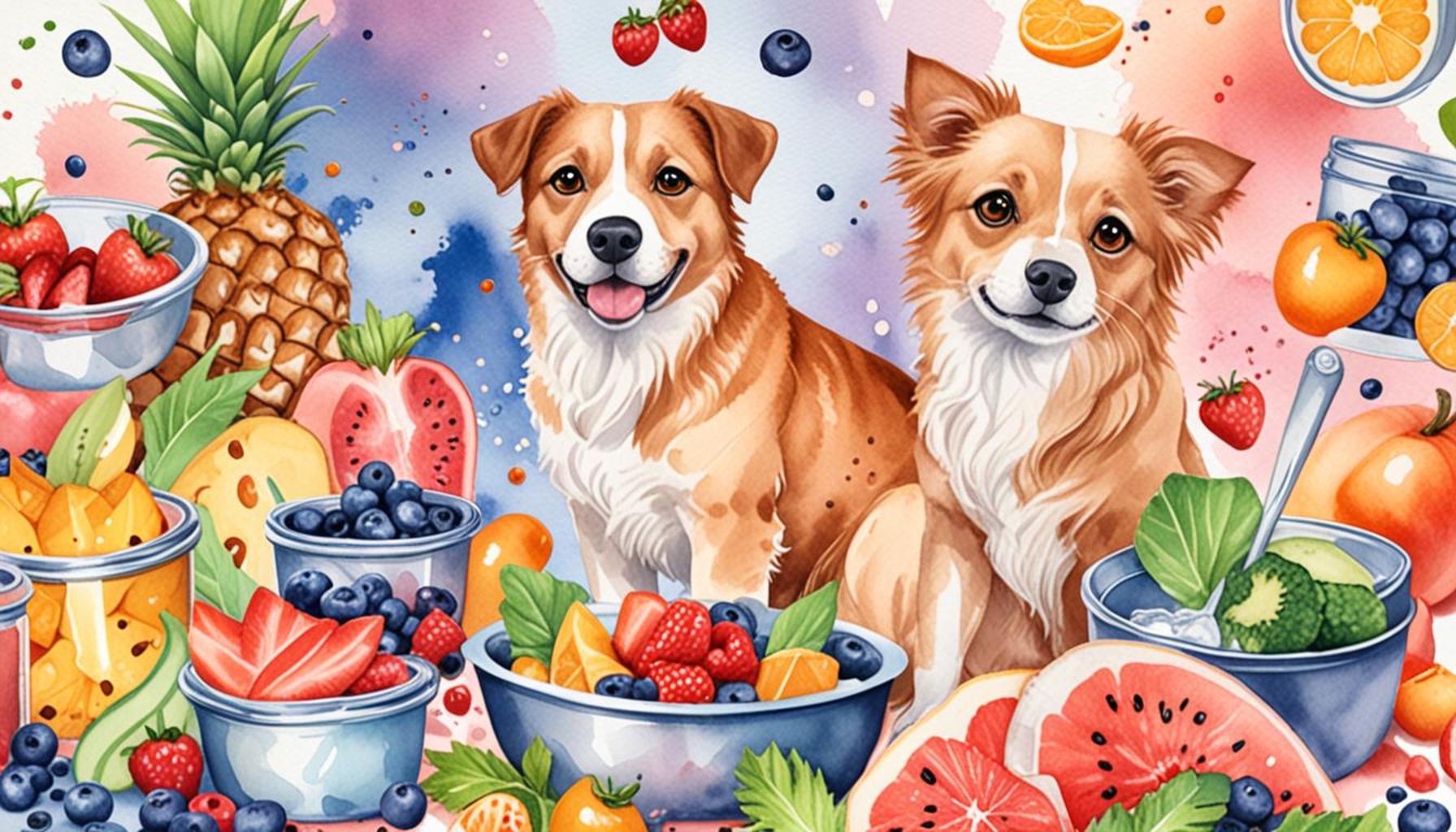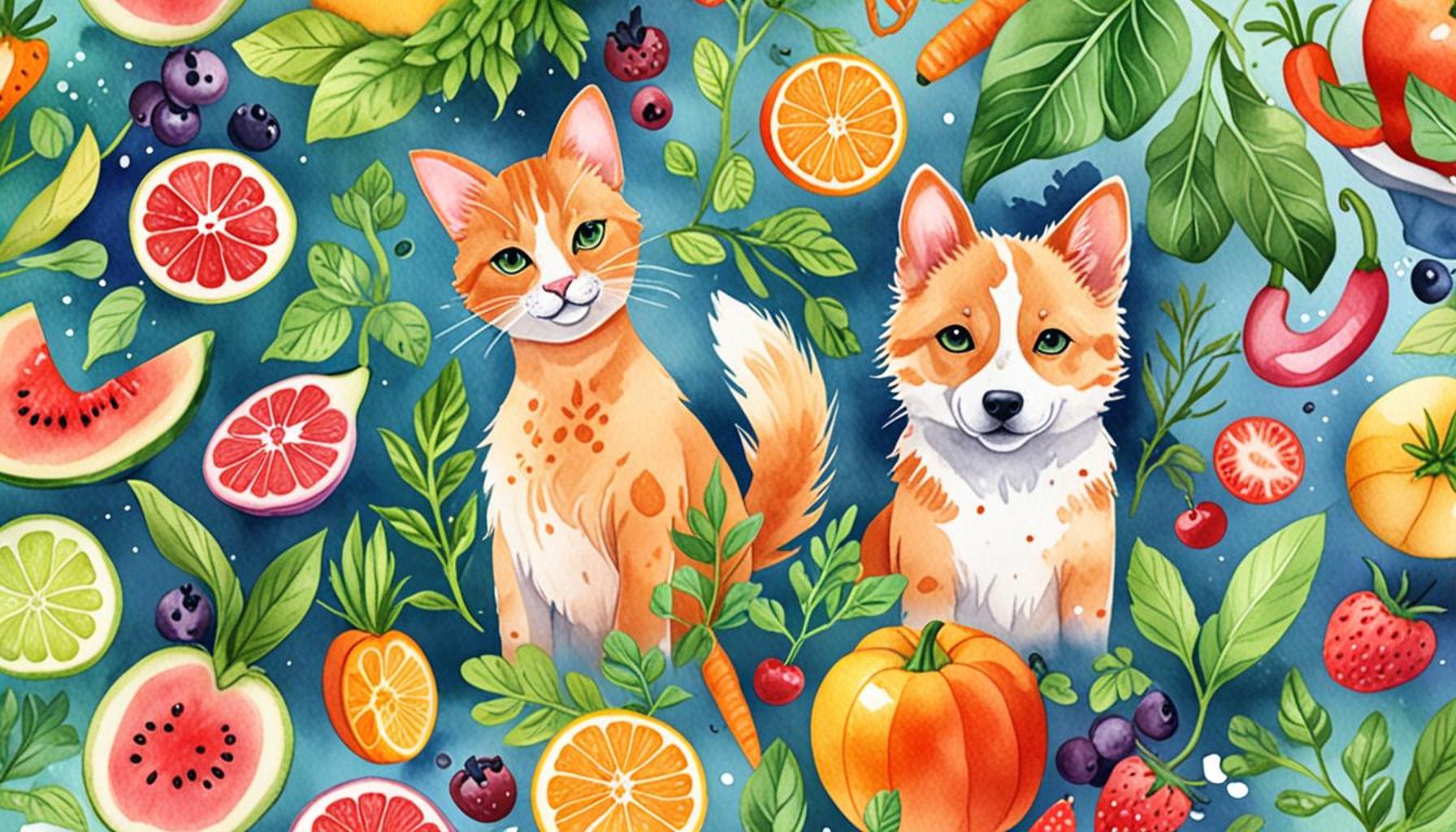Trends in Pet Nutrition: The Rise of Raw Diets and Their Effects on Animal Health

The Rise of Raw Diets
In recent years, a significant shift has occurred in the pet nutrition landscape. More pet owners are turning to raw diets, believing these options enhance their furry companions’ health and vitality. A growing number of pet blogs, forums, and social media groups reflect this movement, with passionate advocates sharing success stories and personal experiences that illustrate the potential advantages of raw feeding. This trend raises important questions about the implications for animal health and well-being, positioning raw diets as a polarizing topic among pet owners and veterinary professionals alike.
Defining Raw Diets
Raw diets typically consist of:
- Raw meats – This includes muscle meat, organ meats, and fish, often sourced from responsibly raised animals.
- Fruits and vegetables – Fresh produce such as carrots, apples, and spinach can provide essential vitamins and fiber, supporting overall health.
- Raw bones – These are often included for their nutritional benefits and to support dental health, as chewing can promote oral hygiene.
Advocates argue that these diets mimic what wild animals eat, potentially leading to benefits such as improved coat health, increased energy levels, and even better digestion. For instance, some owners report shinier fur and more playful behavior after transitioning their pets to raw diets. Proponents of this feeding style often cite the experience of wild canines and felines, suggesting that domesticated pets can thrive on similar nutritional regimens without the additives and preservatives present in many mainstream pet foods.
Health Effects and Considerations
However, transitioning to a raw diet introduces a spectrum of considerations that pet owners must carefully evaluate:
- Risk of bacterial contamination – Handling raw meat can pose a risk, as it may contain pathogens such as Salmonella or E. coli, which can impact both pets and humans.
- Nutritional imbalances – Formulating a balanced raw diet can be challenging. Pet owners must ensure their animals receive all essential nutrients, including vitamins and minerals, to avoid deficiencies.
- Digestive issues – Some pets may experience gastrointestinal upset during the transition period, leading to symptoms such as diarrhea or vomiting, which can discourage continued use of raw diets.
As a result, pet owners must navigate these factors while seeking the best options for their pets. Such considerations underscore the importance of informed decision-making and consulting with veterinarians when contemplating a raw diet. Research suggests that certain breeds or conditions may respond better or worse to raw feeding, making it imperative to take an individualized approach.

What Lies Ahead?
As the trend continues to gain traction in the United States, understanding the effects of raw diets on animal health is crucial. Veterinary research and anecdotal evidence will shape the future of pet nutrition, prompting further exploration and discussion. With more studies being published on the subject, pet owners are becoming more discerning about their choices. As they look for the best ways to enhance their pets’ quality of life, conversations about raw diets will likely remain at the forefront.
DISCOVER MORE: Click here to learn about the benefits of a vegetarian diet for pets
The Raw Diet Debate: Nutritional Benefits and Risks
The emergence of raw diets in pet nutrition has ignited a passionate debate among pet owners and veterinary experts alike. Proponents of raw feeding argue that these diets, characterized by fresh, unprocessed food, resemble the ancestral diets of canines and felines. The potential benefits, as cited by advocates, appeal to many owners seeking to provide their pets with a more natural and nutrient-dense diet. However, understanding the full spectrum of potential health effects is essential for any responsible pet parent.
Gains for Health and Vitality
Supporters of raw diets highlight several perceived advantages that can lead to improved animal health. Among the claimed benefits are:
- Enhanced Digestion – Many pet owners report improved digestion among their pets on raw diets, resulting in firmer stools and less gas. The natural enzymes present in fresh meat and vegetables are thought to aid digestion.
- Healthier Skin and Coat – Raw feeding is often pointed to in accounts of pets experiencing shinier coats, reduced shedding, and less allergic skin reactions, suggesting a potential link between diet and dermal health.
- Increased Energy Levels – Numerous pet owners express that their dogs and cats display heightened energy and vitality when transitioned to a raw diet. This observation can often be attributed to the absence of fillers and preservatives found in commercial pet foods.
Advocates believe that these benefits arise from the elimination of artificial ingredients and the inclusion of whole food sources. As such, many view raw diets as a bridge back to a more natural feeding approach that could enhance overall pet wellness.
Challenges of Raw Feeding
However, the shift to a raw diet isn’t without its challenges and potential risks. Important concerns have come to light that warrant careful consideration:
- Food Safety Risks – Raw meat may harbor harmful bacteria such as Salmonella and Listeria, posing risks not only to pets but also to humans who might come into contact during meal preparation. This has led to concerns about cross-contamination in households and the appropriate handling of raw food.
- Balancing Nutritional Needs – Crafting a well-rounded raw diet requires a significant understanding of nutritional requirements. Many owners struggle to provide the right balance of proteins, fats, vitamins, and minerals, potentially leading to deficiencies if not properly managed.
- Potential for Pancreatitis and Gastrointestinal Issues – Some pets may react negatively during the transition period, experiencing digestive upset or acute pancreatitis due to the high-fat content often found in raw meat.
Recognizing these factors is essential for pet owners who are contemplating adopting or maintaining a raw diet. Consultation with a veterinarian knowledgeable in animal nutrition can help ensure a balanced approach, tailored to individual pet needs. As scientific studies continue to explore the benefits and risks associated with raw diets, pet owners are encouraged to stay informed and aligned with best practices in pet nutrition.
| Advantages of Raw Diets | Key Features |
|---|---|
| Enhanced Digestive Health | Raw diets are often easier for pets to digest, leading to improved gastrointestinal function. |
| Improved Skin and Coat Condition | High-quality proteins and fats found in raw diets can enhance skin elasticity and coat shine. |
| Weight Management | Raw diets can help maintain a healthy weight due to their natural ingredients and lack of fillers. |
| Increased Energy Levels | Raw food often results in higher energy levels for pets, promoting overall vitality and activity. |
As pet owners increasingly seek healthier options for their furry companions, raw diets are becoming popular, sparking debates over their safety and benefits. Advocates argue that these diets, which mimic a dog’s ancestral eating patterns, can lead to significant health improvements. Moreover, the inclusion of fresh, whole ingredients is believed to provide better nutritional value compared to processed dog food. This shift towards more natural feeding patterns is creating a ripple effect in the pet food industry, leading to a surge in raw diet products and information campaigns.The rise of raw diets has also prompted numerous studies to assess their impact on animal health. Many proponents highlight anecdotal evidence of enhanced wellbeing among pets transitioning to a raw food regimen. However, it’s important for pet owners to consult with veterinarians or animal nutritionists to ensure that their pets are receiving balanced nutrition. Research continues to explore the long-term effects of raw diets, focusing on biochemical markers of health in dogs and cats. Understanding these dynamics is crucial for anyone considering a shift in their pet’s dietary habits.
DISCOVER MORE: Click here to learn about the benefits of probiotics
The Regulatory Landscape and Scientific Inquiry
As the trend of raw diets gains traction among pet owners, it becomes increasingly important to understand the regulatory framework and scientific research that underpins these choices. Despite the enthusiastic endorsements from many raw diet advocates, the establishment of guidelines to safeguard pet health remains a work in progress.
Regulatory Measures and Safety Standards
In the United States, the Association of American Feed Control Officials (AAFCO) provides guidelines on pet food formulations, but raw pet foods often slip through the cracks of traditional regulations. While some manufacturers attempt to adhere to AAFCO standards, the minimal oversight of raw diets raises concerns regarding safety and nutritional adequacy. The lack of stringent regulations can lead to variability in food quality, potentially exposing pets to unsafe or unbalanced diets.
Moreover, states such as California and New York have implemented their regulations concerning the sale of raw pet food, mandating proper labeling and handling to mitigate health risks. Despite these moves, many raw diet products still face challenges in being subjected to rigorous testing for pathogenic bacteria, making pet owners responsible for thorough hygiene when preparing these meals. Ensuring cleanliness can be a daunting task, especially when managing the logistics of multiple pet feeding stations in a household.
The Ongoing Scientific Inquiry
As raw diets continue to trend, veterinary researchers are scrutinizing their long-term effects on animal health. Recent studies have revealed mixed outcomes regarding the nutritional benefits of raw feeding. For instance, while some research suggests raw diets can contribute positively to the immune system, the potential for deficiencies, such as calcium and phosphorus imbalances, can also pose serious health threats.
In a notable study published in the Journal of the American Veterinary Medical Association (JAVMA), pets on raw diets were found to have a higher likelihood of developing certain gastrointestinal illnesses when compared to those on commercially prepared dog food. Additionally, the research pointed to a possible increase in zoonotic infections linked to raw meat preparation in the home. This correlation emphasizes the need for pet owners to balance enthusiasm with caution, taking time to weigh the information provided by scientific literature.
Veterinarian Perspectives on Raw Diets
Veterinarian opinions on raw feeding can vary significantly, influenced by years of professional experience, knowledge of nutrition, and individual case histories. As some veterinarians advocate for raw diets based on anecdotal evidence or personal observances, others caution against potential risks. Veterinary associations, including the American Veterinary Medical Association (AVMA), typically maintain a more reserved stance, encouraging pet owners to approach raw diets with a critical eye.
Consultations with veterinarian nutritionists are becoming key in addressing individual needs. These professionals can create customized diets that might blend the intuitive desires of pet owners with the scientifically-backed requirements of each pet’s unique physiology. Such collaboration provides a promising avenue for navigating the complexities of pet nutrition, allowing for safer feeding practices that respect evolving trends.
In the face of these dynamics, the raw diet movement continues to unfold, generating lively discussions about the future of animal nutrition and the responsibilities pet owners must uphold to ensure their pets remain healthy and thriving.
DISCOVER MORE: Click here to learn how to create the perfect space for your pets
Conclusion: Navigating the Raw Diet Trend in Pet Nutrition
As we stand at the intersection of trends in pet nutrition and evolving consumer preferences, the rise of raw diets has sparked significant discourse regarding their implications on animal health. Pet owners are keen to explore the perceived benefits of these diets, including enhanced vitality and coat quality; however, substantial challenges accompany these choices. The regulatory landscape remains murky, with raw diets often lacking the oversight present in commercial pet foods, raising valid concerns over safety and nutrient balance.
Scientific studies present a mixed picture, shedding light on both the potential advantages and risks associated with raw feeding. Remarkably, while some findings support the idea of improved immune function, others indicate heightened risks for gastrointestinal diseases and zoonotic infections. This dichotomy emphasizes the critical need for pet owners to approach raw diets with informed caution, bolstered by professional advice from veterinarians and nutritionists who can tailor dietary plans to meet individual pets’ needs.
As the raw diet movement continues to evolve, a collaborative approach involving pet owners, veterinarians, and food manufacturers is essential. Such collaboration will not only equip pet owners with the knowledge necessary to make safe, informed choices but also foster a deeper understanding of the complexities surrounding pet nutrition. As we witness ongoing scientific inquiry and regulatory developments, it becomes increasingly evident that the journey toward optimal pet health is an evolving narrative—one that demands attention, research, and responsible choices from all parties involved.



